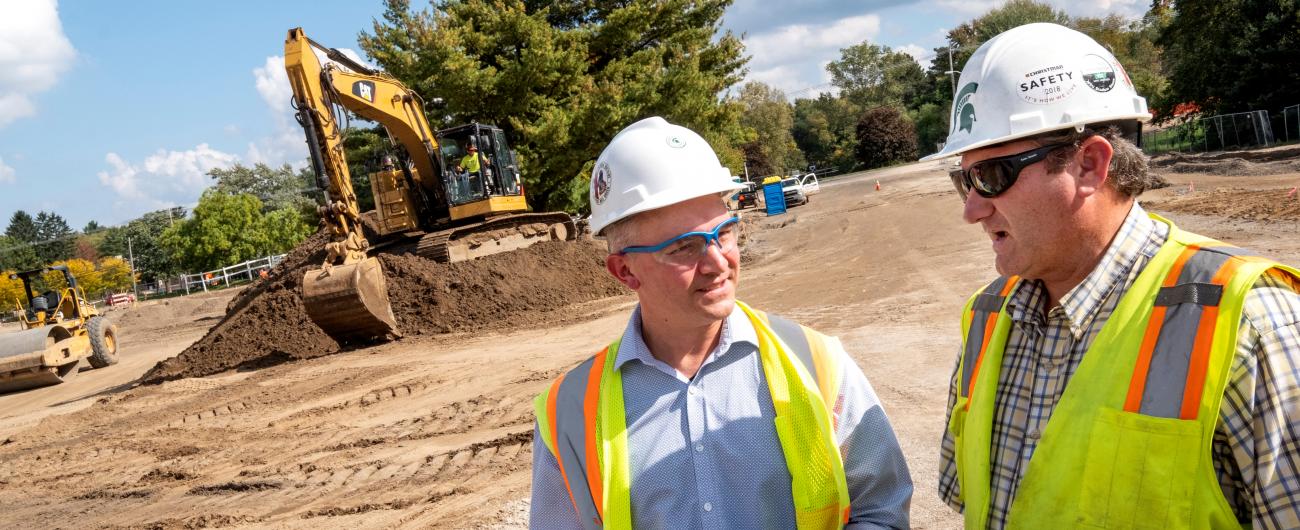Streamlining processes cuts construction planning time

Anthony Yuhasz
September 6, 2019
The MSU Board of Trustees recently revised the university's Capital Project Planning and Approval Policy. The revision, initiated by Infrastructure Planning and Facilities’ Planning, Design and Construction department staff increases the threshold for Board of Trustees’ approval of construction projects from $1 million to $5 million and effectively shortens the planning time for many projects.
Previously, the process included a review by the Campus Infrastructure Planning Work Group (CIPWG) and approval by the MSU Board of Trustees (BOT) of any construction project with a budget of $1 million or more, or projects that result in a footprint change to campus. Compliance with the Campus Master Plan and zoning requirements, along with ensuring proper funding, are part of these reviews.
Staff members from IPF’s Planning, Design and Construction department realized that streamlining the process would be essential to shorten planning times and respond quickly to new space needs.
“Being tied to the BOT meeting schedule resulted in many projects having additional waiting times built into the planning process,” said Jack Mumma, IPF senior contract administrator.
All projects greater than $1 million will still go through CIPWG review, but in place of BOT approval, projects up to $5 million will undergo internal review by a team that includes leadership from both IPF and Facilities Planning and Space Management.
“Our proposal to increase the threshold for BOT approval from $1 million to $5 million has resulted in the Board having to review 60% fewer projects, while still overseeing 90% of funding dollars,” Mumma said. “The revised policy also encourages bidding projects before approvals, giving greater cost certainty earlier in the process.”
By streamlining the process for lower dollar projects, IPF reduces the planning time for capital projects, can more quickly respond to our customers’ needs and has strengthened our commitment to stewardship and service excellence to the university.
MSU’s Global Impact Initiative, which pledged to recruit new faculty investigators to accelerate research in some of the “grand challenges” confronting the world, is one example of how the new process will help people throughout the university. It will permit updating of research spaces as well as the construction of new high-tech facilities in a more simplified, nimble way, allowing new researches quicker access to vital lab spaces.
